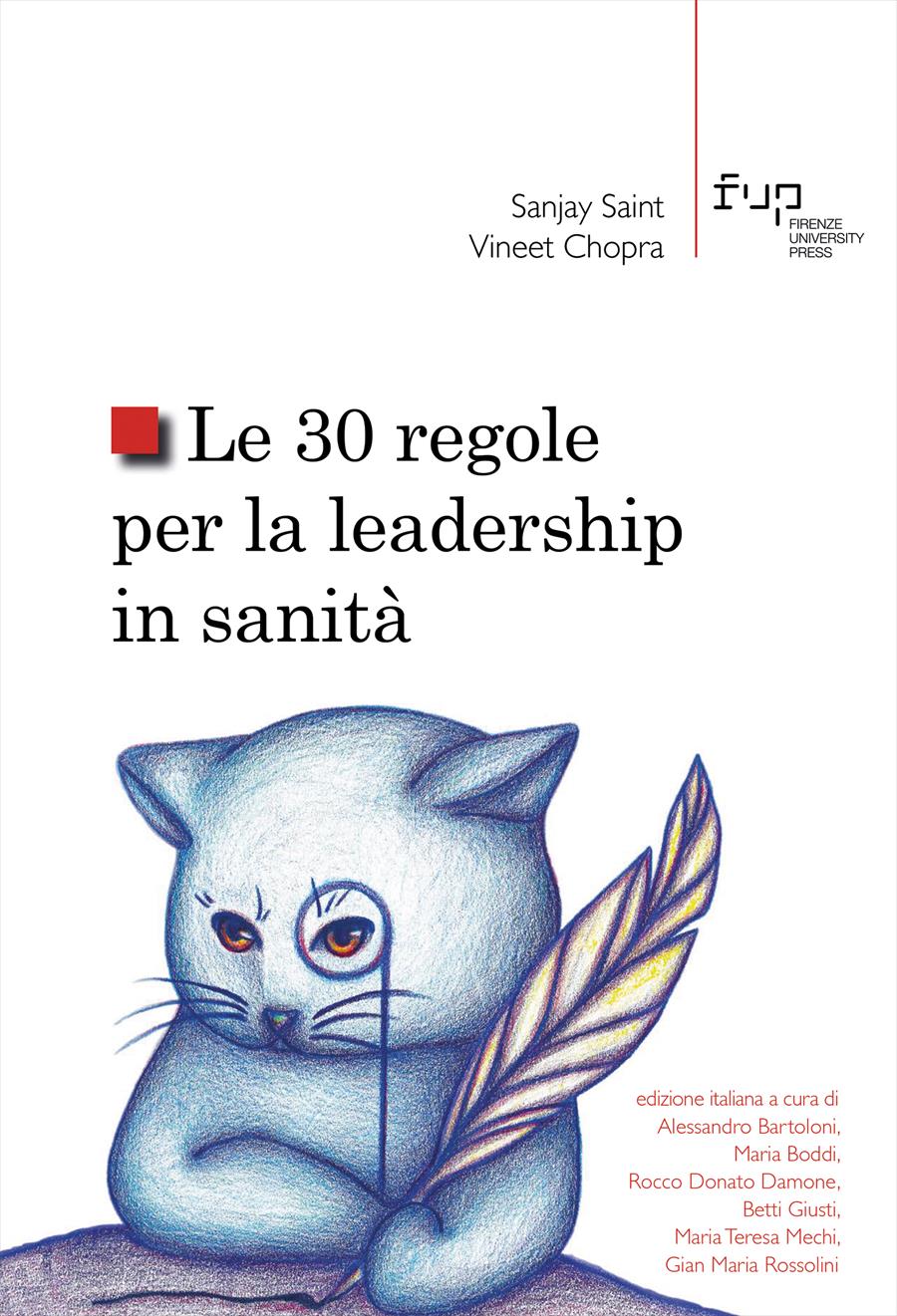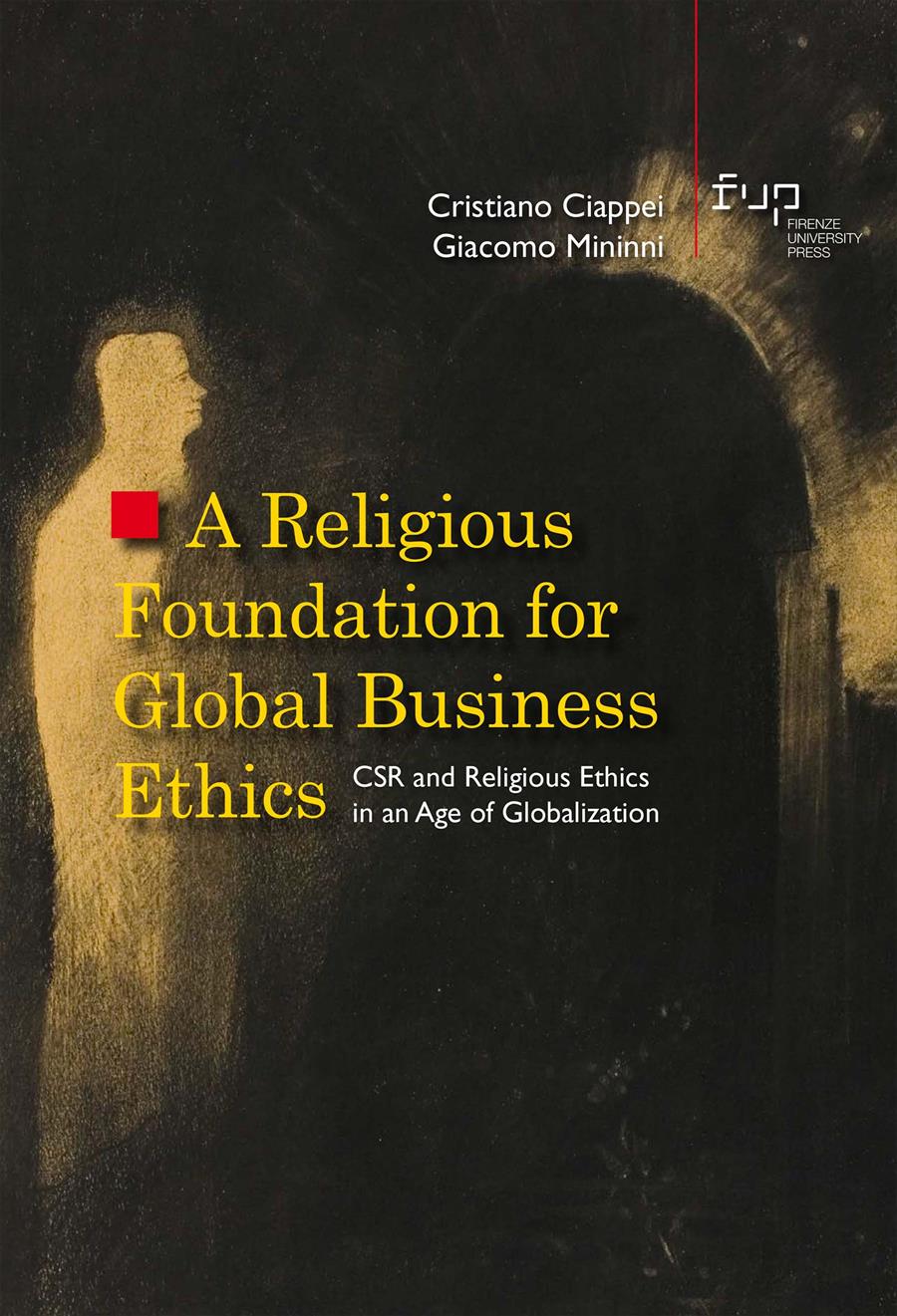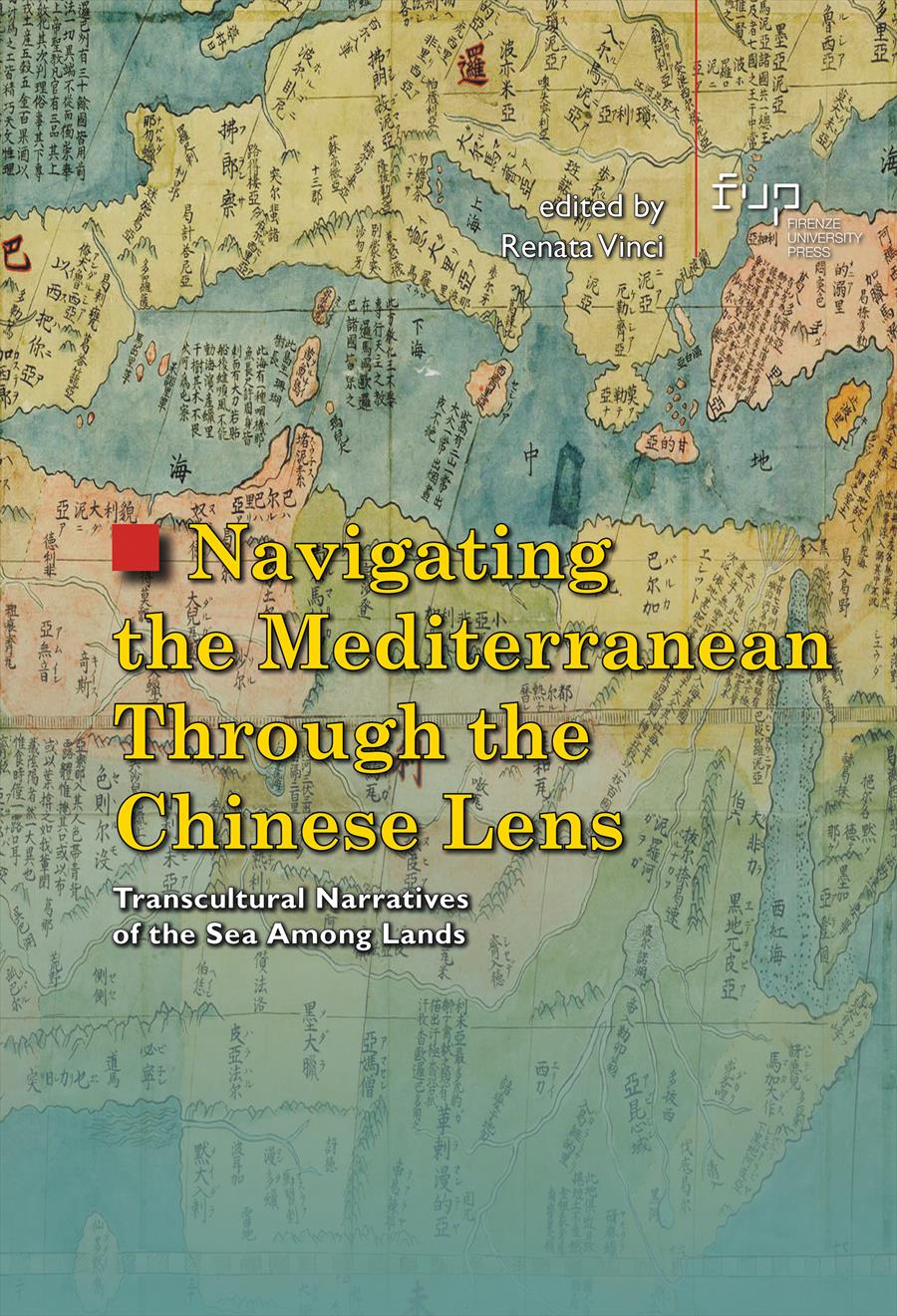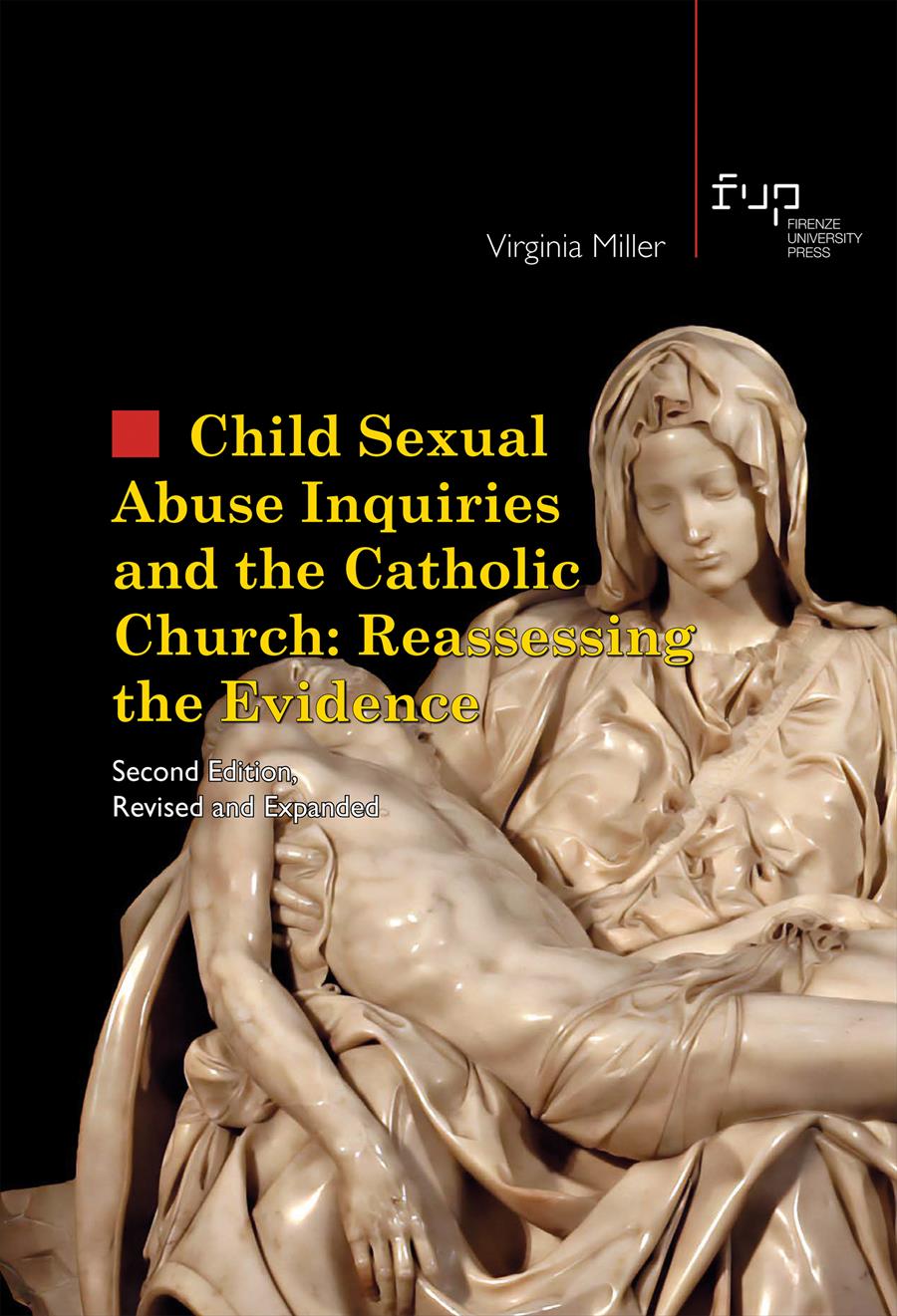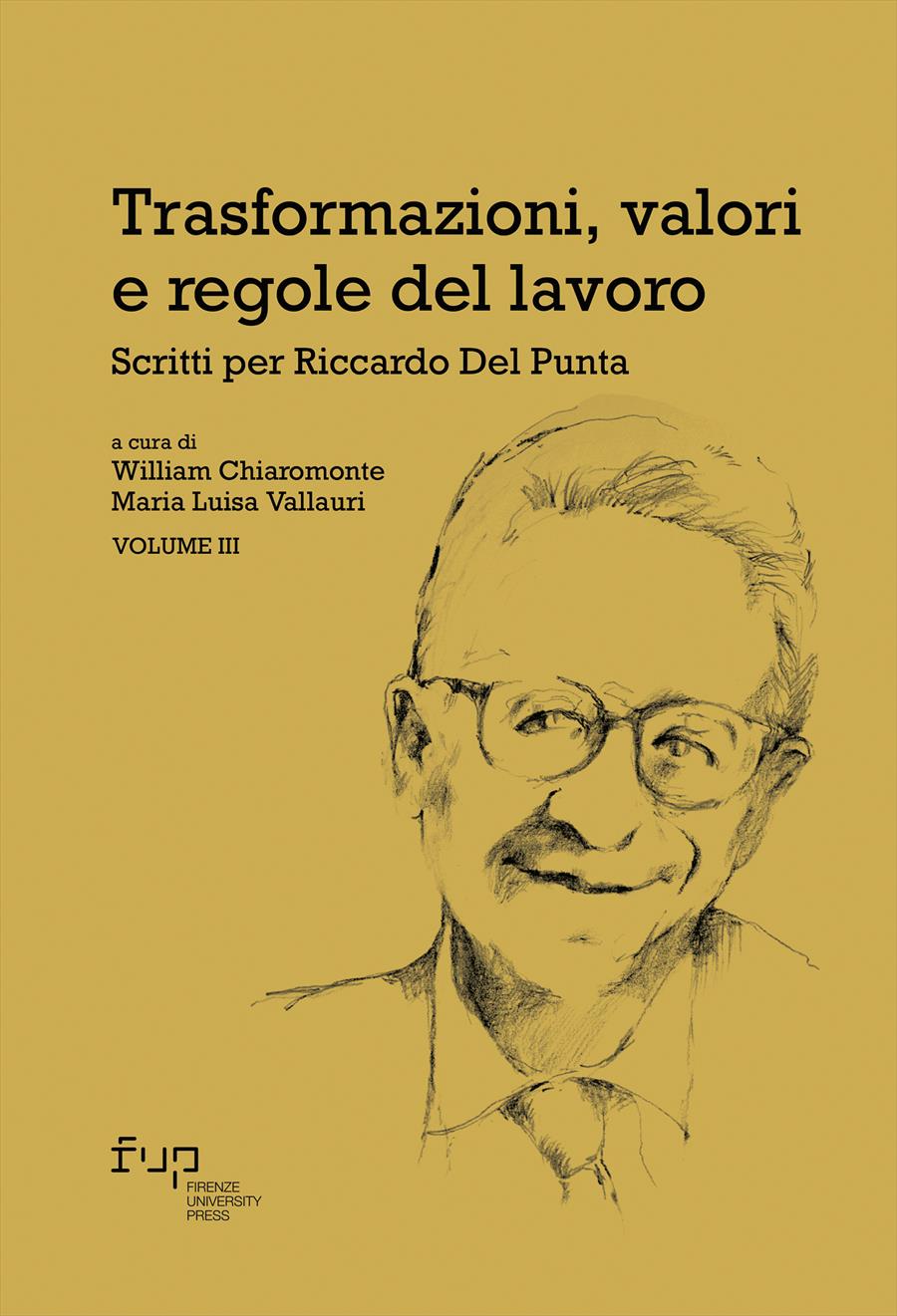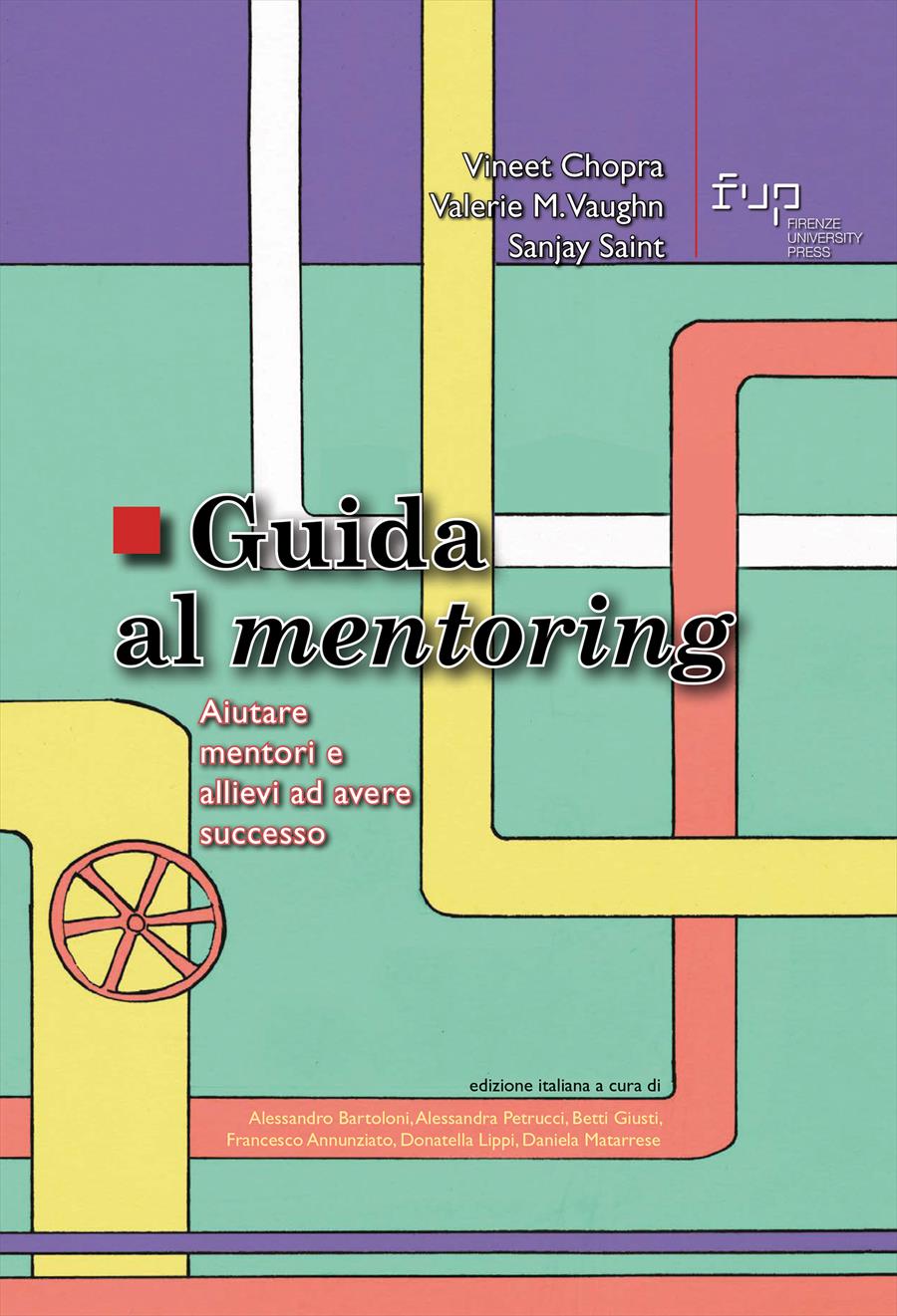Le 30 regole per la leadership in sanità
- Sanjay Saint,
- Vineet Chopra,
- Edited by:
- Alessandro Bartoloni,
- Maria Boddi,
- Rocco Donato Damone,
- Betti Giusti,
- Maria Teresa Mechi,
- Gian Maria Rossolini,
Thirty Rules for Healthcare Leaders is the essential guide for everyone in healthcare, from those just starting their careers to those who are established leaders. The authors have been in leadership roles within healthcare systems for several years, and have carefully studied healthcare leadership during site visits to hospitals around the world. The book presents practical and timely advice packaged in pithy “pearls” that can be used by time-pressured professionals. Original artwork makes each rule memorable. Meant to be read in one sitting, or one at a time, Thirty Rules for Healthcare Leaders speaks to a broad range of healthcare professionals, regardless of title or experience. If you work in healthcare, this is your new must-read book.
- Keywords:
- Leadership,
- Leader,
- Mentorship,
- Mentor,
- Healthcare,
- DOI: 10.36253/978-88-9273-992-5
- Series: Studi e saggi
- Scientific Board: Consiglio editoriale FUP
- Language: Italian
- Subjects: Medicine
University of Florence, Italy - ORCID: 0000-0001-9758-1523
University of Florence, Italy - ORCID: 0000-0001-6960-1080
University of Florence, Italy - ORCID: 0000-0002-8708-9444
University of Florence, Italy - ORCID: 0000-0002-9386-0434
University of Michigan, United States - ORCID: 0000-0002-9579-6990
University of Michigan, United States - ORCID: 0000-0001-8670-9376
Dr. Vineet Chopra is the Robert W. Schrier Chair of the Department of Medicine at the University of Colorado Anschutz Medical Campus, and Deputy Editor for the Annals of Internal Medicine journal. His research interests include vascular-access-related complications, patient safety, and mentoring.
Alessandro Bartoloni is Professor of Infectious Diseases at the University of Florence and Director of the Infectious and Tropical Disease Unit of Careggi University Hospital in Florence. His research focuses mainly on tropical diseases and antibiotic use and resistance with special attention to low-middle income countries.
Maria Boddi is Professor of Internal Medicine at the University of Florence. Her research interests include vascular-access-related complications and patient safety.
Rocco Donato Damone is General Manager of the Azienda Ospedaliero Universitaria Careggi (Florence). He has over ten years of experience in strategic management of the healthcare authorities of the Tuscany Region. He is expert in strategic and operational planning in the healthcare sector and in management control tools, techniques and methods.
Betti Giusti is Professor of Clinical Pathology at the University of Florence. She is President of the School of Human Health Sciences of the University of Florence. Her research focuses on pathophysiology and genetic bases of atherothrombotic diseases, vascular and cardio- and cerebro-vascular deseases, hereditary connective tissue disorders and pharmacogenetics.
Maria Teresa Mechi is Health Director of the Azienda Ospedaliero Universitaria Careggi (Florence). Her main interest is the organization of health services, mainly at hospital level, with particular attention to the organizational change management. She has been the Tuscany region hospital network manager and pioneer in the application of Lean thinking in healthcare in Italy.
Gian Maria Rossolini is Professor of Microbiology and Clinical Microbiology at the University of Florence, and Director of the Microbiology and Virology Laboratory of Careggi University Hospital (Florence). His research focuses on microbial drug resistance mechanisms, epidemiology and impact, and on new antimicrobial agents and diagnostic systems.
- Algahtani A. 2014. Are Leadership and Management Different? A Review. JMPP, 2: 71-82.
- Barrett LF. 2018 [cited 2018 Jul 12]. Try These Two Smart Techniques to Help You Master Your Emotions [Internet].
- Bennis W, Nanus B. 1985. The Strategies for Taking Charge. New York, NY: Harper Row.
- Bennis W, Nanus B. 1985. The Strategies for Taking Charge. New York, NY: Harper Row.
- Bennis W, Nanus B. 1985. The Strategies for Taking Charge. New York, NY: Harper Row.
- Blanchard KH, Johnson S. 1982. The One Minute Manager. 1st Morrow ed. New York, NY: Morrow.
- Bosk CL. 2003. Forgive and Remember: Managing Medical Failure. Chicago, IL: University of Chicago Press.
- Brett J, Goldberg SB. 2017. How to Handle a Disagreement on Your Team. Harv Bus Rev. Disponibile al seguente link: <https:/hbr.org/2017/07/how-to-handle-a-disagreement-on-your-team>.
- Bryant A. 2017 . How to Be a C.E.O., from a Decade’s Worth of Them. The New York Times. Oct 27.
- Cameron KS, Dutton JE, Quinn RE. 2003. Positive Organizational Scholarship: Foundations of a New Discipline. 1st ed. San Francisco, CA: Berrett-Koehler.
- CBRE. 2016. Mentoring Playbook 201 7. Disponibile al seguente link: <http://elearnresources.cbre.com/TrainingandDevelopment/AMS/Mentoring_p1aybook.pdf>.
- Chamorro-Premuzic T. 2013. Can You Really Improve Your Emotional Intelligence? Harv Bus Rev. Disponibile al seguente link: <https:/hbr.org/2013/05/can-you-really-improve-your-em>.
- Chopra V, Arora VM, Saint S. 2018. Will You Be My Mentor? Four Archetypes to Help Mentees Succeed in Academic Medicine. JAMA Intern Med. 178(2): 175-6.
- Chopra V, Dixon-Woods M, Saint S. 2016. The Four Golden Rules of Effective Menteeship. BMJ Careers.
- Chopra V, Edelson DP, Saint S. 2016. Mentorship Malpractice. JAMA. 315(14): 1453-4.
- Chopra V, Saint S. 2017. 6 Things Every Mentor Should Do. Harv Bus Rev. Disponibile al seguente link: <https:/hbr.org/2017 /03/6-things-every-mentor-should-do>.
- Chopra V, Saint S. 2017. What Mentors Wish Their Mentees Knew. Harv Bus Rev. Disponibile al seguente link: <https://hbr.org/2017/11/what-mentors-wish-their-mentees-knew>.
- Chopra V, Saint S. 2019. Leadership & Professional Development: Hire Hard, Manage Easy. J Hosp Med. 14: 74.
- Collins JC. 2001. Good to Great: Why Some Companies Make the Leapand Others Don’t. 1st ed. New York, NY: Harper Business.
- Collins JC. 2005. Good to Great and the Social Sectors: Why Business Thinking Is Not the Answer. 1st ed. New York, NY: HarperCollins.
- Collins JC. 2005. Good to Great and the Social Sectors: Why Business Thinking Is Not the Answer. 1st ed. New York, NY: HarperCollins.
- Collins JC. 2005. Good to Great and the Social Sectors: Why Business Thinking Is Not the Answer. 1st ed. New York, NY: HarperCollins.
- Dahl M. 2018 May 28. Why Office Friendships Can Feel So Awkward. The New York Times.
- Donabedian A. 2001. A Founder of Quality Assessment Encounters a Troubled System Firsthand. Interview by Fitzhugh Mullan. Health Affairs, 20(1): 137.
- Emerson RW, Emerson EW. 1903. The Complete Works of Ralph Waldo Emerson: Representative Men [Vol. 4]. Boston, MA: Houghton Mifflin Company.
- Fisher R, Ury WL, Patton B. 1991. Getting to Yes: Negotiating Agreement Without Giving In. 2nd ed. New York, NY: Penguin.
- Gawande A. 2010. The Checklist Manifesto: How to Get Things Right. 1st ed. New York, NY: Metropolitan Books-Henry Holt & Co.
- Gewertz BL, Logan DC. Phase IV. 2015. Team President. The Best Medicine. New York, NY: Springer. 61-71.
- Gilmartin H, Goyal A, Hamati MC, Mann J, Saint S, Chopra V. 2017. Brief Mindfulness Practices for Healthcare Providers-a Systematic Literature Review. AmJ Med. 130(10): 1219. e1-e1 7.
- Gladwell M. 2006. The Tipping Point: How Little Things Can Make a Big Difference. Boston, MA: Little, Brown.
- Goleman D. 2007. Social Intelligence: The New Science of Human Relationships. New York, NY: Bantam Books.
- Goleman D. Date Unknown [cited 2018 Jul12]. Emotional Intelligence [Internet). Disponibile al seguente link: <http://www.danieigoleman.info/topics/emotional-intelligence/>.
- Gordon S. 2005. Nursing Against the Odds: How Healthcare Cost Cutting, Media Stereotypes, and Medical Hubris Undermine Nurses and Patient Care. Ithaca, NY: Cornell University Press; 2005.
- Goulston M. 2015. How to Know If You Talk Too Much. Harv Bus Rev. Disponibile al seguente link: <https://hbr.org/2015/06/how-to-know-if-you-talk-too-much>.
- Gruenert S, Whitaker T. School Culture Rewired: How to Define, Assess, and Transform It. Alexandria, VA: ASCD; 201 S.
- Halpern G. 2017 [cited 2018 Jul 17]. The Higher Leaders Climb, the More Others See [Internet]. Disponibile al seguente link: <https://aboutleaders.com/higher-leaders-climb-more-others-see>.
- Harrod M, Saint S. 2017. Teaching Inpatient Medicine: What Every Physician Needs to Know. New York, NY: Oxford University Press.
- Harrod M, Saint S. 2017. Teaching Inpatient Medicine: What Every Physician Needs to Know. New York, NY: Oxford University Press.
- Harrod M, Saint S. 2017. Teaching Inpatient Medicine: What Every Physician Needs to Know. New York, NY: Oxford University Press.
- Harv Bus Rev. Disponibile al seguente link: <https·//hbr.org/2015/04/the-skills-doctors-need-to-be-effective-executives>.
- Health NioM. 5 Things You Should Know about Stress. Disponibile al seguente link: <https://www.nimh.nih.gov/health/publications/stress/index.shtml>.
- Hougaard R, Carter J. 2017. If You Aspire to Be a Great Leader, Be Present. Harv Bus Rev. Disponibile al seguente link: <https://hbr.org/2017/12/if-you-aspire-to-be-a-great-leader-be-present>.
- J Hosp Med. 14: 189.
- Jain SH. 2015. The Skills Doctors and Nurses Need to Be Effective Executives.
- Katzenberg J. Nov 7. 2009. The Benefit of a Boot Out the Door. The New York Times.
- Kelley RE. 1988. In Praise of Followers. Boston, MA: Harvard Business School Press.
- Kouzes JM, Posner BZ. 2016. Learning Leadership: The Five Fundmentals of Becoming an Exemplary Leader. Hoboken, NJ: Wiley.
- Li D. 2014 [cited2018 Jul 12]. What’s the Science Behind a Smile? [Internet]. Disponibile al seguente link: <https:/jwww.britishcouncil.org/voices-magazine/famelab-whats-science-behind-smile>.
- Lipman V. 2013. 5 Simple Steps to More Efficient, Effective Meetings. Forbes. Disponibile al seguente link: <https://www.forbes.com/sites/victorlipman/2013/03/01/5-simple-steps-to-more-efficient-effective-meetings>.
- Love S. 2017. The Case for Encouraging Disagreement. LinkedIn. Disponibile al seguente link: <https://www.linkedin.com/pulse/case-encouraging-disagreement-shawnee-love>.
- Malone MS. 2018 Feb 11. The Secret to Midcareer Success. The wall Street Journal.
- Mangrulkar RS, Saint S, Chu S, Tierney LM. 2002. What Is the Role of the Clinical “Pearl”? Am J Med. 113(7): 617-24.
- MangrulKar RS, Saint S, Chu S, Tierney LM. 2002. What is the Role of the Clinical “Pearl”?. Am J Med, 113: 617-24.
- Meddings J, Rogers MAM, Krein SL, Fakih MG, Olmsted RN, Saint S. 2014. Reducing Unnecessary Urinary Catheter Use and Other Strategies to Prevent Catheter-Associated Urinary Tract Infection: An Integrative Review. BMJ Qual Saf, 23(4): 277-89.
- Mill JS. 1859. On Liberty. 1st ed. London, England: John W. Parker and Son.
- Miller WR, Rollnick S. 2012. Motivational Interviewing: Helping People Change. 3rd ed. New York, NY: Guilford Press.
- Northouse PG. 2018. Leadership: Theory and practice. 8th ed. Thousand Oaks, CA: Sage publications.
- Northouse PG. 2018. Leadership: Theory and practice. 8th ed. Thousand Oaks, CA: Sage publications.
- Paul A. 2015. Two Things to Do After Every Meeting. Harv Bus Rev. Disponibile al seguente link: <https//hbr.org/2015/11/two-things-to-d -after-every-meeting>.
- Peters TJ, Waterman RH. 1982. In Search of Excellence: Lessons from America’s Best-Run Companies. New York, NY: Warner;.
- Rev. Disponibile al seguente link: <https://hbr.org/2018/10/how-doctors-can-be-better-mentors>.
- Roth D. 2013. Supporting Healthy Conflict in the Workplace. Forbes. Disponibile al seguente link: <https://www.forbes.com/sites/davidroth/2013/07/29/supportinghealthy-conflict-in-the-workplace>.
- Saint S, Bloor L, Chopra V. 2016. Motivational Interviewing for Healthcare Providers. BMJ Opinion. Disponibile al seguente link: <http://blogs.bmj.com/bmj/2016/11/30/vineet-chopra-et-al-motivational-interviewing-for-healthcare-providers/>.
- Saint S, Chopra V. 2018. How Doctors Can Be Better Mentors. Harv Bus
- Saint S, Chopra V. 2018. How Doctors Can Be Better Mentors. Harv Bus Rev. Disponibile al seguente link: <https://hbr.org/2018/10/how-doctors-can-be-better-mentors>.
- Saint S, Chopra V. 2019. Leadership & Professional Development: Know YourTLR.
- Saint S, Greene MT, Krein SL, et al. 2016. A Program to Prevent Catheter Associated Urinary Tract Infection in Acute Care. N Engl J Med, 374: 2111-9.
- Saint S, Kowalski CP, Banaszak-Holl J, Forman J, Damschroder L, Krein SL. 2009. How Active Resisters and Organizational Constipators Affect Health Care-Acquired Infection Prevention Efforts. Jt Comm J Qual Patient Saf.35(5): 239-46.
- Saint S, Krein SL, Stock RW. 2015. Preventing Hospital Infections: Real World Problems, Realistic Solutions. New York, NY: Oxford University press.
- Saint S, Krein SL, Stock RW. 2015. Preventing Hospital Infections: Real World Problems, Realistic Solutions. New York, NY: Oxford University Press.
- Saint S, Krein SL, Stock RW. 2015. Preventing Hospital Infections: Real-World Problems, Realistic Solutions. New York, NY: Oxford University Press.
- Saint S, Krein SL, Stock RW. 2015. Preventing Hospital Infections: Real-World Problems, Realistic Solutions. New York, NY: Oxford University Press.
- Saint S, Krein SL, Stock RW. 2015. Preventing Hospital Infections: RealWorld Problems, Realistic Solutions. New York, NY: Oxford University Press.
- Saint S, Krein SL, Stock RW. 2015. Preventing Hospital Infections: RealWorld Problems, Realistic Solutions. New York, NY: Oxford University Press.
- Sandstrom GM, Dunn EW. 2014. Social Interactions and Well-Being: The Surprising Power of Weak Ties. Pers Soc Psychol Bull.40(7): 910-22.
- Saunders EG. 2018. What to Do When Personal and Professional Commitments Compete for Your Time. Harv Bus Rev. Disponibile al seguente link: <https://hbr.org/2018/04/what-to-do-when-when-personal-and-professional-commitments-compete-for-your-time>.
- Schawbel D. 2013. Dr. Henry Cloud: How to Manage Boundaries in the Workplace. Forbes. Disponibile al seguente link: <https://www.forbes.com/sites/danschawbel/ 2013/05/10/dr-henry-cloud-how-to-manage-boundaries-in-the-workplace>.
- Schlender B. 2012 Apr 17. New Wisdom from Steve Jobs on Technology, Hollywood, and How “Good Management Is like the Beatles”. Fast Company.
- Schutz W. 1979. Profound Simplicity. London, England: Turnstone Books.
- Stone D, Reen S, Patton B. 2010. Difficult Conversations: How To Discuss What Matters Most. New York, NY: Penguin;.
- Sutcliffe KM, Vogus TJ, Dane E. 2016. Mindfulness in Organizations: A Cross-Level Review. Annu Rev Organ Psychol Organ Behav. 3(1): 55-81.
- Sutton RI. 2010. Forgive and Remember: How a Good Boss Responds to Mistakes. Harv Bus Rev. Disponibile al seguente link: <https:/hbr.org/2010/08/forgive-and-remember-how-a-goo>.
- Vaughn V, Saint S, Chopra V. 2017. Mentee Missteps: Tales From the Academic Trenches. JAMA. 317: 4 75-6.
- Waljee JF, Chopra V, Saint S. 2018. Mentoring Millennials. JAMA. 319: 154 7-8.
- Walter E. 2013. Thoughtful Branding: Where the Company Begins and Ends. Forbes. Disponibile al seguente link: <https://www.forbes.com/sites/ekaterinawalter/2013/09/24/thoughtful-branding-where-the-company-begins-and-ends>.
- Weber L, Lublin JS. 2014 Jun 12. The Daddy Juggle: Work, Life, Family and Chaos. The Wall Street Journal.
- Welch J, Welch S. 2005. Winning. New York, NY: Harper Business.
- Welch J, Welch S. Winning. 2005. New York, NY: Harper Business. Disponibile al seguente link: <Available from: https://www.inc.com/minda-zetlin/employee-facing-personal-problems-heres-what-to-do.html>.
- Williams Jr. GS. 2015. (Informal) Leadership. Linkedln. Disponibile al seguente link: <https://www.linkedin.com/pulse/informal-leadership-garr-s-williams-jr->.
- Williams R. 2012 Sep 13. Why We Need Kind and Compassionate Leaders. Financial Post.
- Yoder SK, Yoder IS, Yoder L. 2010 Jan 17. Work, Family and the Problem of Balance. The Wall Street Journal.
- Publication Year: 2022
- Pages: 112
- eISBN: 978-88-9273-992-5
- Content License: CC BY 4.0
- © 2022 Author(s)
- Publication Year: 2022
- Pages: 112
- ISBN: 978-88-9273-991-8
- Content License: CC BY 4.0
- © 2022 Author(s)
Bibliographic Information
Book Title
Le 30 regole per la leadership in sanità
Editors
Alessandro Bartoloni, Maria Boddi, Rocco Donato Damone, Betti Giusti, Maria Teresa Mechi, Gian Maria Rossolini
Authors
Sanjay Saint, Vineet Chopra
Peer Reviewed
Number of Pages
112
Publication Year
2022
Copyright Information
© 2022 Author(s)
Content License
Metadata License
Publisher Name
Firenze University Press
DOI
10.36253/978-88-9273-992-5
ISBN Print
978-88-9273-991-8
eISBN (pdf)
978-88-9273-992-5
eISBN (epub)
978-88-9273-993-2
Series Title
Studi e saggi
Series ISSN
2704-6478
Series E-ISSN
2704-5919
